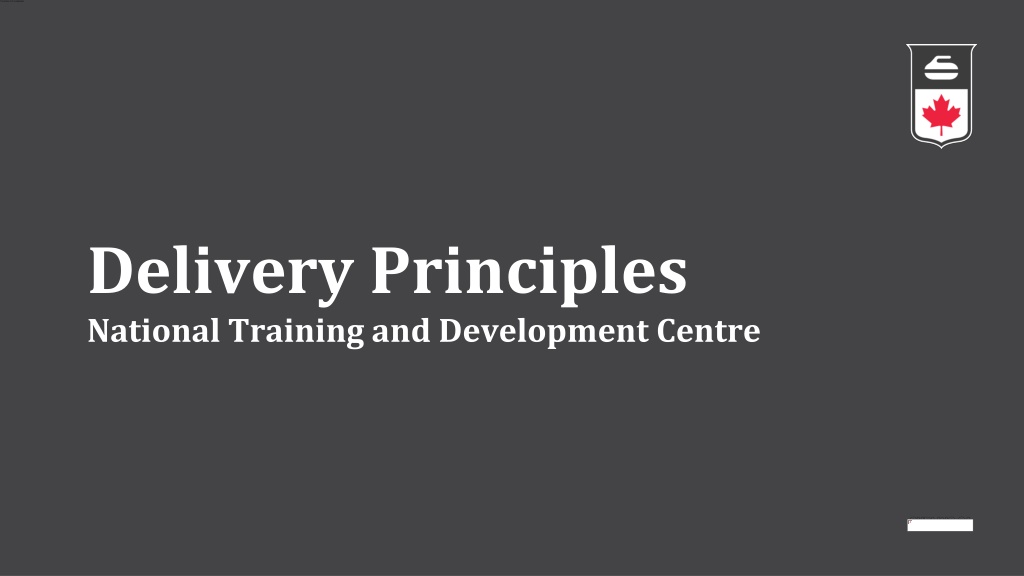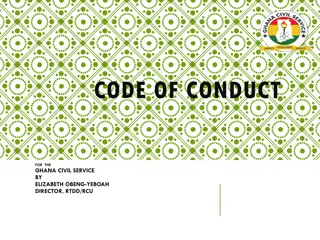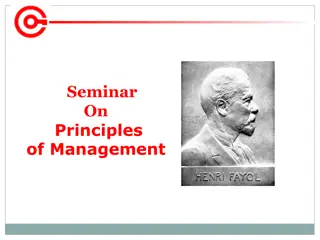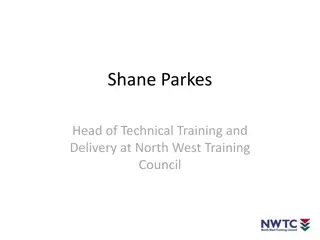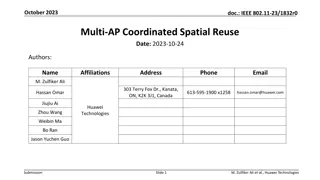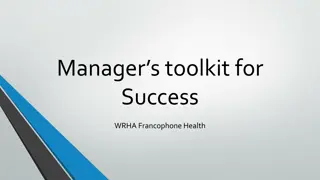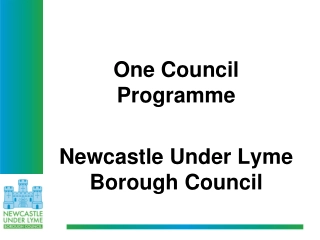Delivery Principles
Understand the key elements of a curling delivery including line, weight, and rotation. Explore the functional motion and anatomy of a curling shot, emphasizing the importance of staying in your lane for accurate shots. Discover the nuances of weight control and deceleration in mastering the art of curling.
Download Presentation
Please find below an Image/Link to download the presentation.
The content on the website is provided AS IS for your information and personal use only. It may not be sold, licensed, or shared on other websites without obtaining consent from the author. Download presentation by click this link. If you encounter any issues during the download, it is possible that the publisher has removed the file from their server.
Presentation Transcript
Delivery Principles National Training and Development Centre
A Functional Motion The function of the curling delivery is to produce the intended line, weight, and rotation on a consistent basis, and in the process to make as many shots as possible. National Training and Development Centre 2
The Anatomy of a Curling Shot Line o Weight o Rotation o National Training and Development Centre 3
Line = Direction Line is the rock s initial direction, which starts out on a straight path and eventually begins to curl as it travels down the ice. National Training and Development Centre 4
The Old Image of Line The old image of a Single Line running from the middle of the rock to the target broom can be limiting for advanced curlers. This image only allows for a perfectly centred slide, and only accommodates a pure (i.e., straight-through) release. National Training and Development Centre 5
A New Image of Line A new image of Two Lines (i.e., a Lane) about a broom head wider than the rock, addresses both of these limitations. This image allows for a slide that is slightly off-centre, and gives curlers the option of a pure, mini-set, or set release. National Training and Development Centre 6
Stay in Your Lane We like to use the analogy of a sprinter running in their lane. This gives curlers a little more freedom to nail their line. National Training and Development Centre 7
Weight = Speed Weight is the rock s initial speed, which will decelerate steadily and predictably as it travels down the ice. National Training and Development Centre 8
Deceleration Realities Regardless of the shot being played, both rock and body will begin to decelerate immediately after as the Slide begins. While its shape will depend on the specific weight of the shot, this deceleration can always be seen as a downward curve. National Training and Development Centre 9
Managing Deceleration Knowing where the rock is on its deceleration curve can make it easier to find the right weight for the shot. Once this right weight is found, a controlled arm extension is the best way to preserve that weight until the rock is released. National Training and Development Centre 10
Ride the Curve We like to use the analogy of a surfer riding a wave. This can help curlers to envision the rock s deceleration curve. National Training and Development Centre 11
Rotation = Spin Rotation is the rock s initial spin, which will also decelerate steadily and predictably as it travels down the ice. National Training and Development Centre 12
Optimal Rotation Advanced curlers are best to employ 4.5 to 5.0+ rotations in order to manage championship playing conditions. This has a positive impact on line by delaying the break point, and on weight by creating additional carry. National Training and Development Centre 13
Key Contributors It s important to start with appropriate handle positions, along with sufficient grip pressure. The other key contributor is a consistent release tempo (i.e., the cadence of turn application). National Training and Development Centre 14
Set the Clock We like to use the analogy of an old-school analog clock. This helps curlers to be more precise with their handle positions. National Training and Development Centre 15
Form Follows Function The most reliable way for a curler to get the Line, Weight, and Rotation right on a consistent basis is to develop and maintain superior delivery mechanics. National Training and Development Centre 16
Broad Applicability The technical principles that will be described in the upcoming slides apply to all styles of delivery (i.e., Flat-Foot, Raised-Heel, and Toe-Tuck). National Training and Development Centre 17
Flat-Foot Delivery The defining characteristic of a Flat-Foot delivery is that the slider heel remains in contact with the ice at all times. National Training and Development Centre 18
Raised-Heel Delivery The defining feature of a Raised Heel delivery is that the slider heel sits just above the ice surface during the slide. National Training and Development Centre 19
Toe-Tuck Delivery The defining characteristic of a Toe-Tuck Delivery is that the slider heel sits against the thigh of the trailing leg during the slide. National Training and Development Centre 20
Flat-Foot Delivery Playlist 1 Kaitlyn Lawes has an excellent Flat-Foot delivery. She absolutely nails her line across the entire sheet. To Watch Videos: Right Click on Image then Open Hyperlink. National Training and Development Centre 21
Raised-Heel Delivery Playlist 2 Mark Nichols has an excellent Raised-Heel delivery. His mechanics give him seemingly effortless power. To Watch Videos: Right Click on Image then Open Hyperlink. National Training and Development Centre 22
Toe-Tuck Delivery Playlist 3 Mike McEwen has an excellent Toe-Tuck delivery. His release skills are arguably the best of any tucker. To Watch Videos: Right Click on Image then Open Hyperlink. National Training and Development Centre 23
Delivery Technique National Training and Development Centre
Delivery Phases Setup Drive Slide Release National Training and Development Centre 25
Phase 1 Setup The Setup is the only static phase of the delivery. It begins when the curler has taken aim, and ends when the body is set into motion. National Training and Development Centre 26
Setup A Solid Foundation The Setup serves as the foundation of the delivery. Any imprecision here will necessitate compensations later on. National Training and Development Centre 27
Setup: Lower Body Checklist Key Considerations Technical Rationale Ensure that the ball of the gripper foot is positioned squarely against the hack, with the laces pointing at the target broom. This will promote a solid and consistent push off during the Drive phase, which enhances both line accuracy and weight control. o Position the heel of the slider foot even with the toe of the gripper foot, with both feet parallel to each other and 2-3 inches of lateral separation between them. This squares the hips to the target line/path, and provides sufficient clearance for the slider foot to move straight back and through during the Drive. o Ensure that the body s weight evenly distributed (i.e., 50% and 50%) between the slider foot and the gripper foot. This not only encourages balance and stability in the Setup, but promotes these same conditions during the Drive phase as well. o Ensure that the knees stack on top of the feet, and that the hips are square (i.e., perpendicular) to the target line, as the body lowers into the hack. This positioning will help the lower body to maintain its proper orientationto the target linethroughout the rest of the delivery. o National Training and Development Centre 28
Setup: Upper Body Checklist Key Considerations Technical Rationale Ensure that the shoulders are square (i.e., perpendicular) to the target line, and level (i.e., parallel) with the ice surface. This makes it more likely for the upper body to maintain the proper orientation throughout the rest of the delivery. o Ensure that the throwing shoulder is internally rotated (i.e., palm in) on in-turns, and externally rotated (i.e., palm out) on out-turns. This positioning will allow the throwing arm to soften properly during the Slide phase, and to extend properly during the Release phase. o Keep the throwing arm/elbow extended, while keeping the upper arm, forearm, and wrist all on the same plane. This creates a strong lever that will carryforward into the Drive,where it will help to promote both line accuracy and weight control. o Ensure that the broom handle is either securely anchored across the back (at 30-35 to the target line), or that it is parallel to it and flat on the ice. This helps to ensure that the broom will be in a suitableposition to enhance stability throughout the rest of the delivery. o National Training and Development Centre 29
Setup: Rock & Handle Checklist Key Considerations Technical Rationale Centre the rock at a chosen position between the middle and the centre-line edge of the hack, while also keeping it well ahead of the gripper kneecap. This allows for side-to-side and front-to-back referencepoints in relation to the gripper kneecap, which can facilitate consistent rock positioning. o Ensure that the handle is already in its pre-set position (i.e., at 10 or 2 o clock) before applying the grip to the handle. This sets the stage for 4.5 to 5.0+ rotations when combined with a proper Release tempo, while also facilitatingproper shoulder positioning. o Centre the index finger on the handle and establish the grip in a manner that puts a slight break in the throwing wrist (i.e., a semi-high position). This grip structure not only facilitates proper turn application, but encourages a mini-set Release motion as well. o Establish a grip pressurebetween 4 and 6 on a scale of 1 to 10, with a potential variance within this range depending on the weight of the shot. This recognizes that more sensitivity could be useful on draws (i.e., less pressure) and more control could be useful on heavy hits (i.e., more pressure). o National Training and Development Centre 30
Phase 2 Drive The Drive is the first moving phase of the delivery. It begins when the body is set into motion, and ends when the curler leaves the hack. National Training and Development Centre 31
Drive Staying Connected The key to a successful Drive is to stay connected. This means that the body and rock work together as a cohesive unit. National Training and Development Centre 32
Drive: Lower Body Checklist Key Considerations Technical Rationale Ensure that the slider foot moves straight back and straight through, travellingon a direct line towards the target broom. The path of the slider foot is a key consideration in line accuracy, and increases the likelihood of a proper plant at the outset of the Slide phase. o Ensure that backward motionis powered by the hips, with an appropriate amount of body weight shifting onto the slider foot as it moves back. This recognizes that more potential power is stored when more of the body s weight has moved behind the hacks and onto the slider foot. o Initiatethe forward motion by shifting body weight back onto the gripper foot, before shifting it forward onto the slider foot as it moves past the hack. This is very similar to a walking or running motion, where weight is shifted to the lead foot in the chain in order to propel the body forward. o Push off from the hack with the necessaryleg drive for the shot, while delaying the timing of this motion progressively as the weight of the shot increases. This secondpoint recognizes that a later push off is also a more horizontal one, with more force therefore transferred into the rock s forward motion. o National Training and Development Centre 33
Drive: Upper Body Checklist Key Considerations Technical Rationale Ensure that the shoulders and arms form a strong frame to support the rock s backward and forward motions during the Drive. This helps to keep the rock on the extended target line as it moves backward, and on the actual target line as it moves forward. o Keep the shoulders square to the target line and level with the ice throughout the Drive,just as they were during the Setup. This keeps the upper body properly oriented to the target line throughout the Drive, which is a key contributor to line accuracy. o Keep the throwing arm straight and diagonal to the ice(i.e., at least a 45 arm angle) during both the backward and forward motions. This ensures that the throwing arm is positioned to be an effective lever, which enhances both line accuracy and weight control. o Keep the broom arm strong and stable throughout the Drive, while maintaining the exact same broom positioning as in the Setup. This locks in the broom-side of the frame, which can be an easy thing to overlook due to the natural focus on the rock-side of the frame. o National Training and Development Centre 34
Drive: Rock & Handle Checklist Key Considerations Technical Rationale If an initial forward press is used, ensure that the rock only moves forward a short distance (i.e., no more than 2-3 inches). This is because a longer motion is bound to activate the small muscles of the forearm, which are best to remain passive during the Drive. o Allow the rock to move straight backward and forward along the target line, without any active contribution from the throwing arm. This recognizes that the Drive should be controlled by the big muscles of the lower body, with a strong upper body frame also stabilizing the rock s path. o Ensure that the rock is always the furthest point forward during both the backward and forward motions of the Drive. This willbe the case as long as the strong upper body frame is maintained, since this includes a distinct forward arm angle. o Maintain the same handle positions (i.e., 10 or 2 o- clock), grip structure, and grippressure (i.e., 4 to 6 out of 10) as established during the Setup. This sets the stage for 4.5 to 5.0+ rotations, while strikingan appropriate balance between sensitivity and control. o National Training and Development Centre 35
Phase 3 Slide The Slide begins when the curler leaves the hack, and ends (from a technical perspective) when the Release motion is initiated. National Training and Development Centre 36
Slide Balance is Everything The key to any successful Slide is good balance. That is, the dynamic stability of rock and body as they move towards the target. National Training and Development Centre 37
Slide: Lower Body Checklist Key Considerations Technical Rationale Ensure that the slider foot plants accurately on the target line, with the inside edge of the ankle aligned with the mid-line of the rock. This eliminates both a drift (i.e., planting too far across the rock s mid-line)and a fade (i.e., planting well short of the rock s mid-line). o Ensure that the front-to-back positioning of the slider foot is appropriate to the slide style (i.e., further forward for flat-foot, further back for toe-tuck). This promotes superior balance and stability throughout the Slide, which enhances both line accuracy and weight control. o Ensure that the hips are still square, and that the trailing leg is now fully extended and entirely within the the outer bordersof the rock. This is important because a line drawn from the trailing foot to the throwing hand is actually what the curler perceivesas the correct Slide line. o Orient the gripper foot so it sits as square to the ankle as possible, ideally with the tops of the toes in contact with the ice. Unlike the other options (i.e., toed-in, toed-out, or just the tips of the toes), this positioning both enhances stability and reduces friction. o National Training and Development Centre 38
Slide: Upper Body Checklist Key Considerations Technical Rationale Keep the shoulders square to the target line and level with the ice,while maintainingthe same broom position as duringthe Setup and Drive. This helps to maintain the proper orientation of the upper body throughout the Slide, which is a key contributor to line accuracy. o Keep the head centred on the target line, knowing that it can still be cocked so that either eye aligns with the mid-lineof the rock. This recognizes that one eye is typically dominant from a sighting standpoint, and that the head can be oriented to address this reality. o Keep the throwing arm/elbowextended for the early part of the Slide (i.e., approximately between the back-line and the t-line). This is a continuation of the arm s positioning in the Drive, and is appropriate since the shoulders will still be a little higher at this point. o Allow the throwing arm to soften at the elbow as the Slide continues (i.e., approximately between the t-line the top of the rings). This offers greater sensitivity to the speed of the rock, while setting the stage for somerelated fine-tuning during the Release phase. o National Training and Development Centre 39
Slide: Rock & Handle Checklist Key Considerations Technical Rationale Keep the rock moving straight forward along the target line, understandingthat the body will now be directly behind it. This puts the body in a position to sight the target line properly,and to monitor the rock s speed as the delivery moves towards Release. o Maintain the same handle positions (i.e., 10 or 2 o- clock), grip structure, and grip pressure (i.e., 4 to 6 out of 10) as during the Setup and Drive. This sets the stage for 4.5 to 5.0+ rotations, while strikingan appropriate balance between sensitivity and control. o When delivering an in-turn, the throwing elbow should point as much out as downward once the arm has softened. This is a natural result of the internal shoulder rotation established in the Setup, and helps to facilitate a mini-setRelease. o When deliveringan out-turn, the throwing elbow should point straight down to the ice once the arm has softened. This is a natural result of the external shoulder rotation established in the Setup, and helps to facilitate a mini-setRelease. o National Training and Development Centre 40
Phase 4 Release The Release begins with arm extension and turn application, and ends when the curler completes their follow-through. National Training and Development Centre 41
Release The Moment of Truth The Release is the moment of truth in any delivery. A poor Release can cancel out all the good work that s taken place previously. National Training and Development Centre 42
Release: Lower Body Checklist Key Considerations Technical Rationale Keep slider foot directly below the vertical mid-line of the body, with the inside of that ankle bisecting the rock, just as it was during the Slide This promotes balance and stability, and helps to ensure that both rock and body remain withinthe target path (i.e., lane). o Maintainthe exact same slider foot positioning (i.e., flat-foot, raised-heel, or toe-tuck) that existed during the Slide. This ensures that there is no change to the the body s main balance point (i.e., the slider foot) at this late juncture of the delivery. o Ensure that the hipsare still square, and that the trailing leg is still extended and entirely within the the outer bordersof the rock. This is important because a line drawn from the trailing foot to the throwing hand is actually what the curler perceivesas a pure Release line. o Maintain the exact same gripperfoot positioning that existed during the Slide (i.e., ideally square to the ankle, with the top of the toes on the ice). This recognizes that a late change to the orientation of the gripper foot could have a negative impact on the body s direction. o National Training and Development Centre 43
Release: Upper Body Checklist Key Considerations Technical Rationale Ensure that the shoulders remain square to the target line and level with the ice throughout the entire Release phase. This orientation positions the shoulders on either side of the target line, which can be a valuable reference point in relation to Release direction. o Extend the throwing arm smoothly over a distance of at least 6 feet, understanding that this distance should lengthen with increased weight. This deliberate motion helps to ensure that the extension of the throwingarm is never too abrupt, with no jabbing involved. o Begin the turn application about halfway through the arm extension, while using a purposeful and consistent tempo (i.e., cadence) with both turns. This sequencing and tempo are both key contributors to producing the desired rotation (i.e., 4.5 to 5.0+ turns to an unimpeded stop). o Maintain the same throwingarm position that existed at separation until the end of the follow-through (i.e., at least 6 feet). This provides important feedback to the curler s nervous system with respect to how the rock has just been released. o National Training and Development Centre 44
Release: Rock & Handle Checklist Key Considerations Technical Rationale Direct the rock from the middle towards the outside of the target broom head while the throwing arm extends and turn is applied. This mini-set motion has proven to work well on all shots and under all playing conditions (i.e., from curling clubs to arenas). o Rotate the handle from its pre-set position(i.e., 10 or 2 o clock) to a point just before 12 o clock, where it will separate from the hand. This reduces the likelihood of drastically redirecting the rock s direction at Release, either by turning it in or setting it out too much. o On an in-turn, 1-2 knuckles (and therefore none of the palm) should be visible between separation and the end of the follow-through. This in-turn hand positioning is entirely consistent with the separation of hand from handle occurring just before 12 o clock. o On an out-turn, 1-2 palm pads (and therefore no knuckles) should be visible between separation and the end of the follow-through. This out-turn hand position is entirelyconsistent with the separation of hand from handle occurring just before 12 o clock. o National Training and Development Centre 45
Delivery Analysis National Training and Development Centre
Analysis Principle 1 External Consistency While we definitely want all our curlers to develop superior technique, no two curlers will deliver in exactly the same way. Therefore, we need to accept a certain range of technique, provided that it produces the intended line, weight, and rotation. National Training and Development Centre 47
Analysis Principle 2 Internal Consistency Beyond what exists from curler to curler, we must also accept a certain amount of technical variability within each curler. Everyone s going to slide a little wide or narrow, light or heavy at times, but that doesn t necessarily equate to a technical flaw. National Training and Development Centre 48
Flat-Foot Delivery Playlist 4 Brad Gushue has a really sound Flat-Foot delivery. There s nobody better when it comes to planting his slider foot. To Watch Videos: Right Click on Image then Open Hyperlink. National Training and Development Centre 49
Flat-Foot Delivery Playlist 5 Brendan Bottcher also has a very effective Flat-Foot delivery. But, what do you notice that differs from what we ve discussed? To Watch Videos: Right Click on Image then Open Hyperlink. National Training and Development Centre 50
